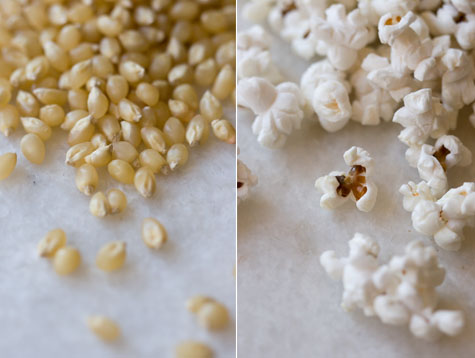
In the process of frying, the oil serves as an introduction medium heat, savory taste, nutritional values and calories for fried foods. Smart select the type of frying oil used for food processing is one of the determinants of health. So that no one select, meet with various types of cooking oil.
Based on the presence or absence of double bonds in the molecule structure, the oil can be divided into three groups, namely:
(1) oil with saturated fatty acids (saturated fatty acids)Saturated fatty acids, among others present in breast milk (Lauric acid) and coconut oil. Its stable and not easily react / transformed into other types of fatty acids.
(2) oil with fatty acid monounsaturated (mono-unsaturated fatty acids / MUFA) or multiple (poly-unsaturated fatty acids).Unsaturated fatty acids having double bond carbon atoms are easy to decompose and react with other compounds, to obtain a stable composition of saturated fatty acids. The more the number of double bonds (poly-unsaturated), the easier it is to react / change the oil.
(3) oil with trans fatty acids (trans fatty acids)Trans fatty acids found in many animal fats, margarine, butter, hydrogenated oils, and is formed from the frying process. Carcinogenic addition, trans fats raise bad cholesterol levels, lower good cholesterol, and cause the babies born prematurely.
Unsaturated fatty acids (omega 3, omega 6, omega 9) is often promoted has many benefits, including lowering "bad cholesterol" (LDL = low density lipoprotein) and prevent heart attacks. Lots contained in vegetable oils such as soybean oil, canola oil, sunflower oil, palm oil, and others.
However, with deep frying Frying system, which is commonly used Indonesian society, as well as repeated use of cooking oil, would alter unsaturated fatty acids into trans fatty acids, which can increase bad cholesterol and lowers good cholesterol.
In addition, excessive heating will change the unsaturated fatty acids into clusters peroxide and free radical compounds that can cause cancer. Because of that, get used to fry with the temperature not too high.
Types of oil that also should be avoided is jelantah or oil that had been used many times. This oil is more viscous, has a free fatty acids high, and blackish brown. Several studies in animal models show repeated use of oil can cause symptoms of carcinogenic and various diseases.
In addition, there are three types of fatty acids by long-short-chain fatty acids, namely a long chain (long chain trigliseride / LCT), the chain's (medium chain trigliseride / MCT), and short chain (short chain trigliseride / SCT).
Oil with a short carbon chain and was immediately absorbed by the body without going through digestive process convoluted. Immediately taken to the liver to convert into energy to improve the function of endocrine glands, organs and body tissues.
Vegetable oils are generally classified as long-chain fatty acids (long chain fatty acids = LCFA), which consists of 18 carbon atoms or more. The size of large molecules, so that should be processed first into small fatty acids and free fatty acid form to be absorbed through the intestinal wall.
Having escaped from the intestinal wall, free fatty acids are reassembled into lipoproteins and taken to heart. There is converted to energy, cholesterol, and the rest piled into fatty tissue. Well, cholesterol and fat that is the cause of many chronic diseases, degenerative diseases, and cancer.
According to research, most of its content is LCFA safflower oil (78%), followed by sunflower oil (69%), and canola oil (31%). LCFA content of olive oil ranges from 9%, while the lowest was coconut oil (2%).
Oil is good for health is containing MUFA and MCT. Olive oil is better and can protect the heart (because of lowering total cholesterol, triglycerides and cholesterol "bad" or LDL) when used as vegetable oil, not fried.
Vegetable cooking oil was classified as PUFAs and LCT will be better if used for sauteing, frying temperatures are not high. If you still want to fry with a high temperature, it is best to use coconut oil or palm kernel oil.
 Papaya leaf, although a bitter taste, can be dioleh delicious dishes. Quite a lot of the nutrients that are beneficial to health in the green-colored leaves. Compared with the pulp, vitamins A and C papaya leaves are much higher.
Papaya leaf, although a bitter taste, can be dioleh delicious dishes. Quite a lot of the nutrients that are beneficial to health in the green-colored leaves. Compared with the pulp, vitamins A and C papaya leaves are much higher.





















